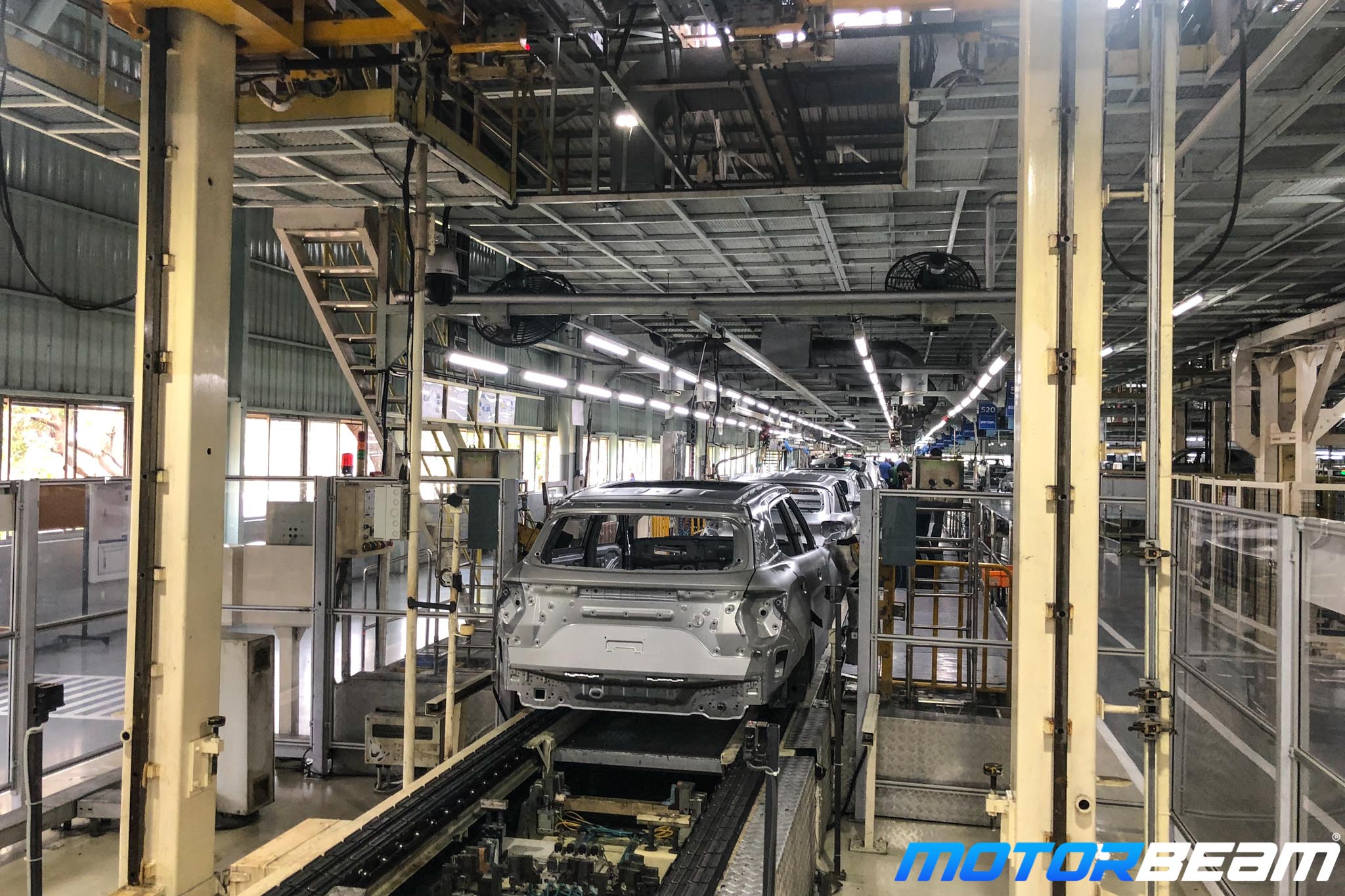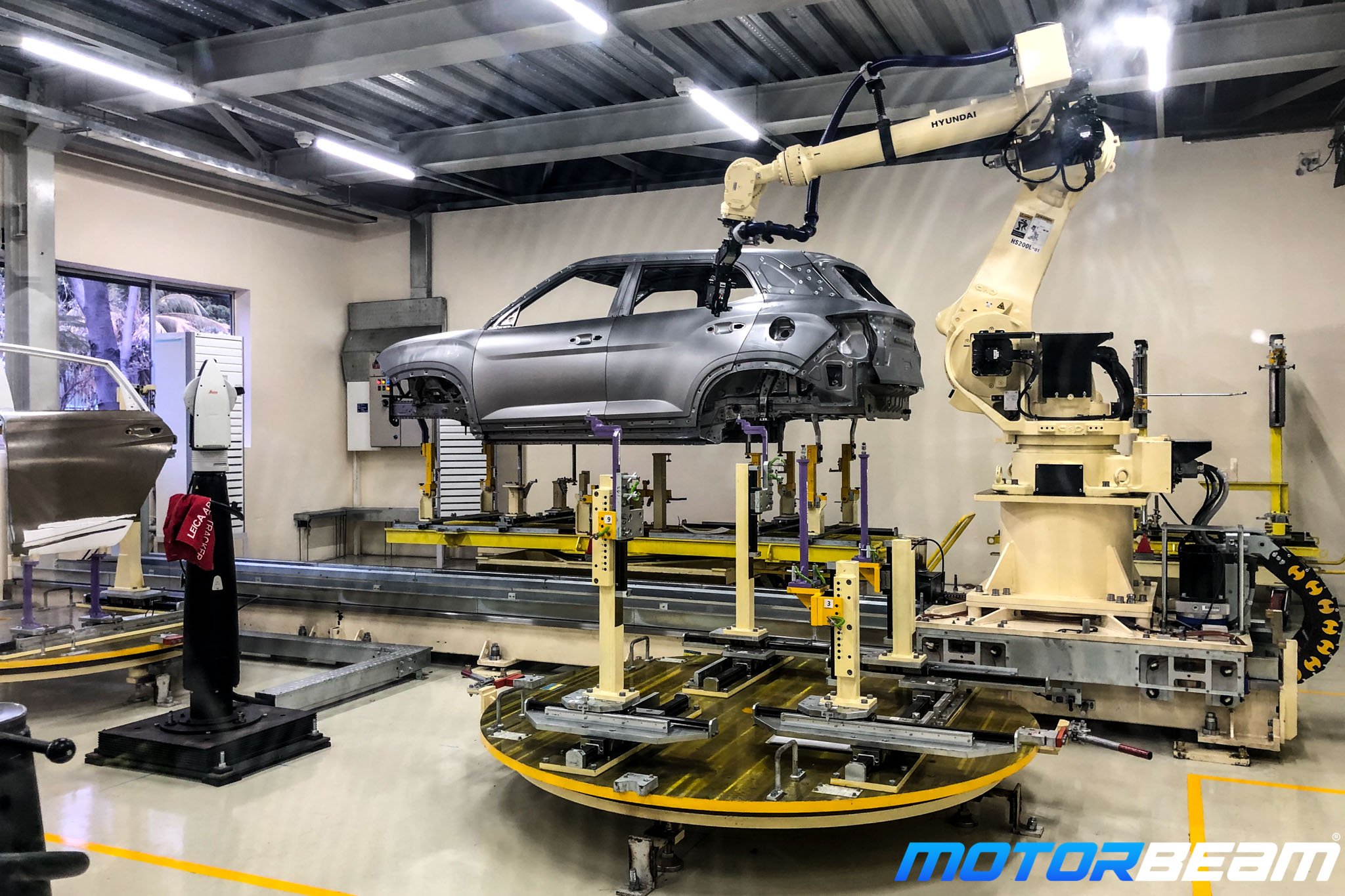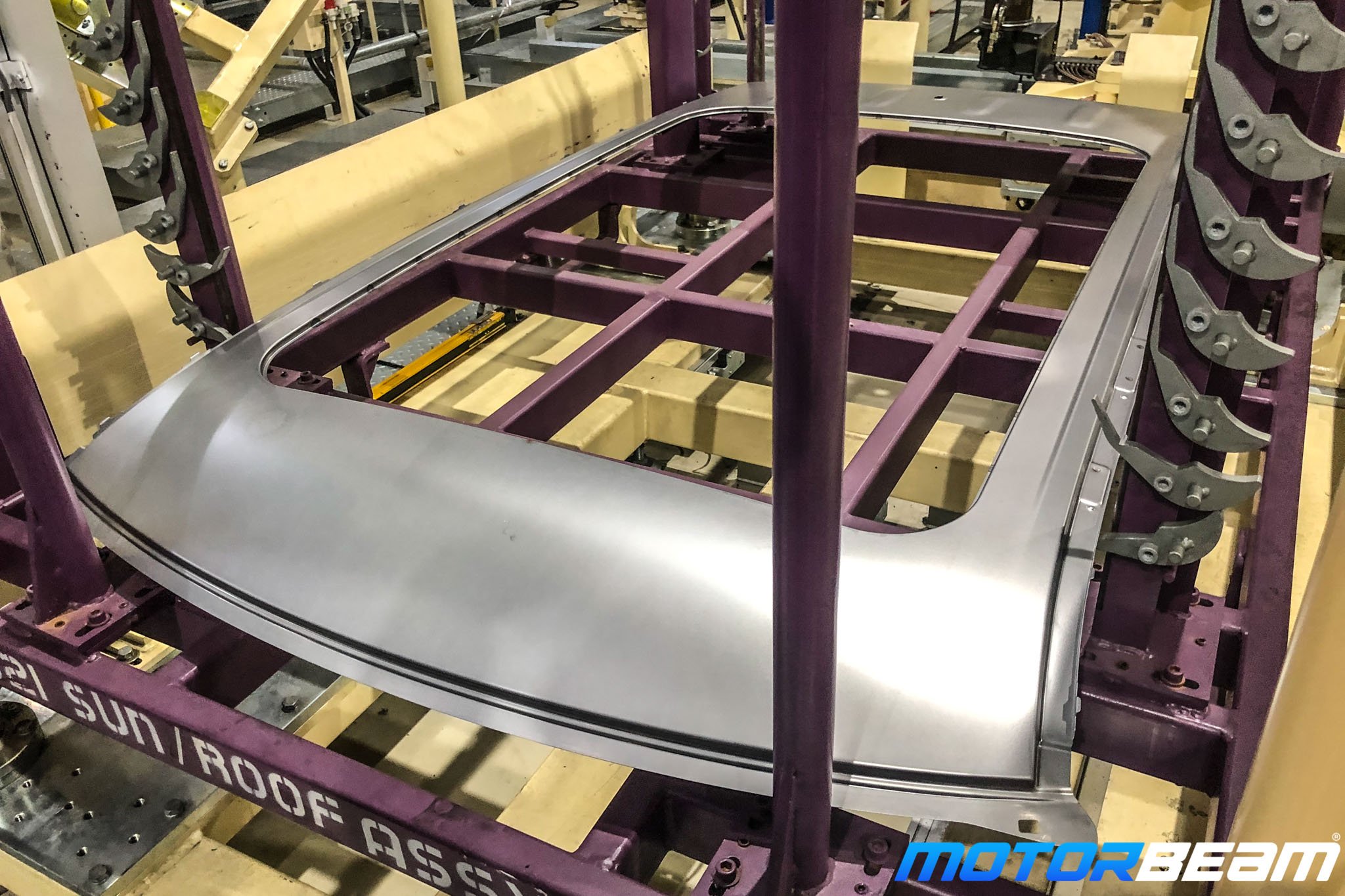
Hyundai Creta Production
Hyundai is gearing up to launch the second generation of the Creta but before we drive and review the car, we’ve got something exciting for you. I went to Hyundai’s manufacturing facility on the outskirts of Chennai to see how the Creta is manufactured.

Hyundai upgraded the plant for the new Creta’s production by installed more robots, an efficient production line and some new processes too. Hyundai is now using 3D scanning technology to check bodyshells and to ensure there are no inconsistencies, no irregular panel gaps, etc. The plant churns out a new car every 33 seconds and there are 13 shops which manufacture 12 models with upto 350+ total variants!

First we went to the body shop. Now the body shop is a very interesting place. It starts with the floor line where the floor of the car is brought together and then it is moved to the other section where it is combined with the roof and sides of the car, to form the entire bodyshell. Another interesting thing is that there’s a new assembly section for the Creta’s roof. The car gets a panoramic sunroof and thus the roof is designed in a way to accommodate it. The 2020 Hyundai Creta uses 74.3% high strength steel and two African elephants can stand on top of the superstructure new Creta. Similarly, seven cars can be stacked over the superstructure of the Hyundai Elantra. The body shop has 4th gen robots with 100% weld automation and about 4500 weld spots per car.
We then went to the press shop. The first process is blanking where the sheets are cut. Then the sheets move to the main line where they are given the shape of different body parts like fenders, doors, etc. Work happens at lightning pace and all the robots work with excellent speed and efficiency. The body panels are then inspected properly by Hyundai engineers. The panels are neatly stacked after that.
Now that we are done with the body shop, we go to the engine shop to see how the 1.5 diesel is made. This engine is BS6-compliant and is shared with Kia Seltos. After the engine is completely assembled, it passes through the express vision system which detects the presence of external parts in the engine assembly. As many as 45 items are checked within a minute.
Finally, we go to the assembly shop where the cars are assembled. First the bodyshell is painted and then various components are fitted. The wiring harness is laid out, the trims are installed, parts like the antenna and lights are installed, the engine is fitted and then the entire cabin is put together. Once the car is ready, it goes to the PDI section of the plant.
At the PDI section, all the cars are checked thoroughly. There’s a checklist of 150-200 points that Hyundai’s staff has to follow and they meticulously check every car before giving it the go ahead. Once the cars are good to go, they’re driven out of the shop for a road test where they are driven on 17 drive tracks within Hyundai’s plant. The cars are then parked in the stockyard. Soon, the cars get shipped to various dealers and are delivered to their respective buyers.
The 2020 Hyundai Creta gets massive changes on the outside and inside. It gets three engine options – 1.5-litre petrol & diesel and a 1.4-litre turbo petrol engine. The Creta gets a long list of equipment like a touchscreen infotainment system with Apple CarPlay, Android Auto, navigation, voice commands, BlueLink connectivity features, panoramic sunroof, electric parking brake with auto-hold, driving modes, traction control modes, supervision cluster and a lot more. We’ll be testing the 2020 Hyundai Creta later this month.




